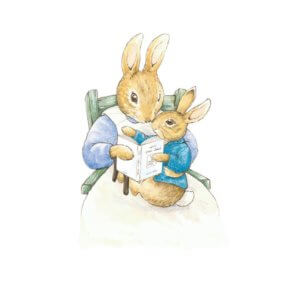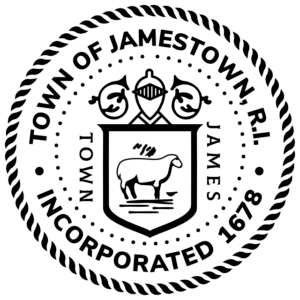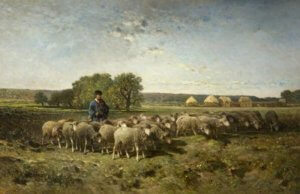Jesus calls us o’er the tumult
of our life’s wild restless sea;
day by day his voice still calls us
saying, ‘Christian, follow me.’
Good Shepherd Sunday
Today we celebrate Good Shepherd Sunday. In our opening collect we pray when Jesus the Good Shepherd calls, we will hear his voice and follow where he leads. In our most familiar psalm, we proclaim the Lord is our shepherd who guides us, restores us, and protects us all the days of our life. Jesus declares that as the Good Shepherd: “I know my own and my own know me. I lay down my life for my sheep.” (Jn 10:14-15).
Six hundred years before the ministry of Jesus the prophet Ezekiel prophesied God’s hope to the peoples of Israel exiled in Babylon: “I will set up over them one shepherd, my servant David, and he shall feed them: he shall feed them and be their shepherd. And I, the Lord, will be their God, and my servant David shall be prince among them; I, the Lord, have spoken. You are my sheep, the sheep of my pasture and I am your God, says the Lord God. “(Eze 34:23-24,31)
Beatrix Potter
As I reflect on the Good Shepherd, my imagination draws me to the memorable writings of Beatrix Potter. They were favorites of my wife, all through her life. As a young father I recited The Tale of Peter Rabbit to our six children so often that I could do it from memory. Beatrix Potter never wrote a children’s book on sheep and shepherds. But she lived on a 4,000-acre farm where, in later life, she cared for flocks of thousands of sheep in the Lake Country of England. Through the wide acknowledgement she received for this work, she became as famous for shepherding as she was for her legendary children’s’ tales.
 Peter Rabbit’s mother, Josephine, is my example of a caring shepherd. Peter is a high-spirited bunny, a ‘wascally wabbit’, who fails to follow the voice of his mother. He leaves the safety of his mother’s flock and ventures into Farmer McGregor’s Garden. Driven by curiosity, he nearly pays the price of failing to follow the voice of his mother. Implored by a friendly sparrow to exert himself, he narrowly escapes his fate and races home. Safely returned within the fold of his mother’s embrace, Peter falls asleep, his tummy warmed by chamomile tea.
Peter Rabbit’s mother, Josephine, is my example of a caring shepherd. Peter is a high-spirited bunny, a ‘wascally wabbit’, who fails to follow the voice of his mother. He leaves the safety of his mother’s flock and ventures into Farmer McGregor’s Garden. Driven by curiosity, he nearly pays the price of failing to follow the voice of his mother. Implored by a friendly sparrow to exert himself, he narrowly escapes his fate and races home. Safely returned within the fold of his mother’s embrace, Peter falls asleep, his tummy warmed by chamomile tea.
Our lives are full of rabbit sightings. Few of us have contact with sheep or shepherds. Not so for us Rhode Islanders. Sheep are part of our heritage. Sheep arrived here soon after our settlement in 1636. For years we conducted a lively sheep export business to Connecticut. In fact, the 1678 Seal of the Town of Jamestown features in its center… a sheep…symbolic of the Town’s early industry. That sheep lives on today in the center of the Jamestown Town Flag and their Town Police patch.

Sheep and shepherds are central to the lives of ancient Hebrews. Long before they settled down as farmers, the Chosen People wandered. They lived in tents and drove their animals to pastures. Job is said to have kept 14,000 sheep. (Job 42:12) King Solomon sacrificed 120 thousand sheep at the dedication of the temple. (1 Kings 8:63) Watching over such immense flocks required skill and dedication. The “good shepherd who gives his life for his sheep” was no myth. A shepherd had to be prepared to fight and defend his flock from wild predators. Two thousand years ago this was a fact of Palestinian life.
In John’s gospel, the image of Jesus as a caring, protecting, guiding shepherd is well understood. The intimacy of sheep and shepherd living together day after day, season upon season formed real affection. Jesus tells us: “I open the gate for my sheep, the sheep hear my voice. I call my sheep by name and lead them out. They will follow me because they know my voice. They will not follow others.” (10:3-5)
Temple

Brissot, Frank; Landscape with a Shepherd and Sheep
Today we are with Jesus at the annual festival of rededication of Solomon’s temple. Solomon’s portico is the traditional place at the Temple where the religious gather for teaching and disputation. Jesus is prepared to be challenged. Those he meets this morning are not of his flock. They do not know his voice. They do not accept that Jesus is the Messiah, the Son of God. They are anxious to hear such blasphemy from his own mouth. Hostility is in the air. In a few moments his antagonists will lift stones with intent to kill him. (10:31)
Jesus is well into his three-year ministry. He has performed astounding signs and miracles that reveal his identity. Yet his challengers do not accept him. On Solomon’s portico, Jesus replies: “I have told you, and you do not believe. The works that I do in my Father’s name testify to me. Even if you do not believe in me, believe the works, so that you may know and understand. (10:38) The Father and I are one.” In this moment, Jesus reveals his identity. Again, his challengers fail to recognize his voice. “You do not believe, because you do not belong to my sheep. My sheep hear my voice.” (10:26-27)
The opening words of John’s Gospel warn us: “Jesus is in the world, and the world came into being through him. Yet the world did not know him. He came to what was his own, and his own people did not accept him.” (1:10-11) Those who love Jesus as their Good Shepherd recognize him through his voice. After his crucifixion Jesus appears to his disciples four times. He appears to Mary Magdalene at the empty tomb and calls her by name. (20:16) He appears twice to the disciples in the locked upper room. (20:19,26) He then appears to the disciples as they return to their fishing by Galilee. (21:4-7) Each time the disciples are, at first, bewildered. As they hear his voice, Jesus is recognized as their Lord and Savior.
The Good Shepherd
![]() Countless others are called to the voice of Jesus, the Good Shepherd. A long parade of martyrs, saints and witnesses have heard his voice. You and I experience it today, every day, in the witness of those at Emmanuel who care for us and our community. Daily we learn of those in the Ukraine and elsewhere who follow the voice of the Good Shepherd, seeking to heal our world of oppression, pain and heartbreak. We are surrounded by those who hear the call of Jesus to love and serve one another.
Countless others are called to the voice of Jesus, the Good Shepherd. A long parade of martyrs, saints and witnesses have heard his voice. You and I experience it today, every day, in the witness of those at Emmanuel who care for us and our community. Daily we learn of those in the Ukraine and elsewhere who follow the voice of the Good Shepherd, seeking to heal our world of oppression, pain and heartbreak. We are surrounded by those who hear the call of Jesus to love and serve one another.
How appropriate that we celebrate Good Shepherd Sunday on Mother’s Day. And no surprise that, in my imagination, Peter Rabbit’s mother is the example that comes to mind of a caring, guiding shepherd. So often it is the memory of a mother’s voice that calls us back to the path of good behavior. I remember the words of our cousin, speaking in remembrance of his mother at her memorial service. Reflecting on the life of his parents, he said: “In life, my father showed me the way. But it is my mother who made sure I got there!”
As the Gospel of John concludes, the resurrected Jesus and Simon Peter are alone on the shore of Galilee. Three times Jesus tests Simon Peter, who denied Jesus three times: “Simon, son of John, do you love me? Do you love me more than these?” Three times Peter responds, “Yes, Lord, you know everything, you know that I love you.” In biblical times, the three-time response confirms a contract between the parties. Thus is Peter restored to his apostleship. As chief shepherd, he is commissioned to feed and tend Christ’s flock. (21:15-17) As chief shepherd Peter shall be called to defend his flock from wild predators. Like Jesus, the Good Shepherd, Peter will one day be called to stretch out his hands, be bound and taken where he does not wish to go. In his final words to Peter, Jesus says: “follow me.” (21:19)
Works Referenced:
This is a homily delivered to a congregation at Emmanuel Church, Newport RI on Sunday, May 8, 2022. I am indebted to the following for their insights into the lectionary for the day: J. Ramsey Michael, The Gospel of John, Eerdmans (2010); R. Alan Culpepper, The Gospel and Letters of John: Interpreting Biblical Texts Series. Abingdon Press. (Kindle Edition); and Henri Daniel-Rops, Daily Life in the Time of Jesus, Hawthorn Books, 1962
Roger C. Bullard, May 8, 2022
- The Hymnal 1982, #549
- Attributed to Elmer Fudd (Looney Tunes)
- From: Beatrix Potter, The Tale of Peter Rabbit, F. Warne & Co, (1902)
- L.G. Connor, A Brief History of the Sheep Industry in the United States, (American Historical Association). Downloaded from Jstor.org (73.217.89.17) on 24 Apr 2022
- Bible History Online (2017) accessed online March 26, 2018, at bible-history.com
- Daniel-Rops, (pp 263-266)
- ibid
- Michaels, p.595
